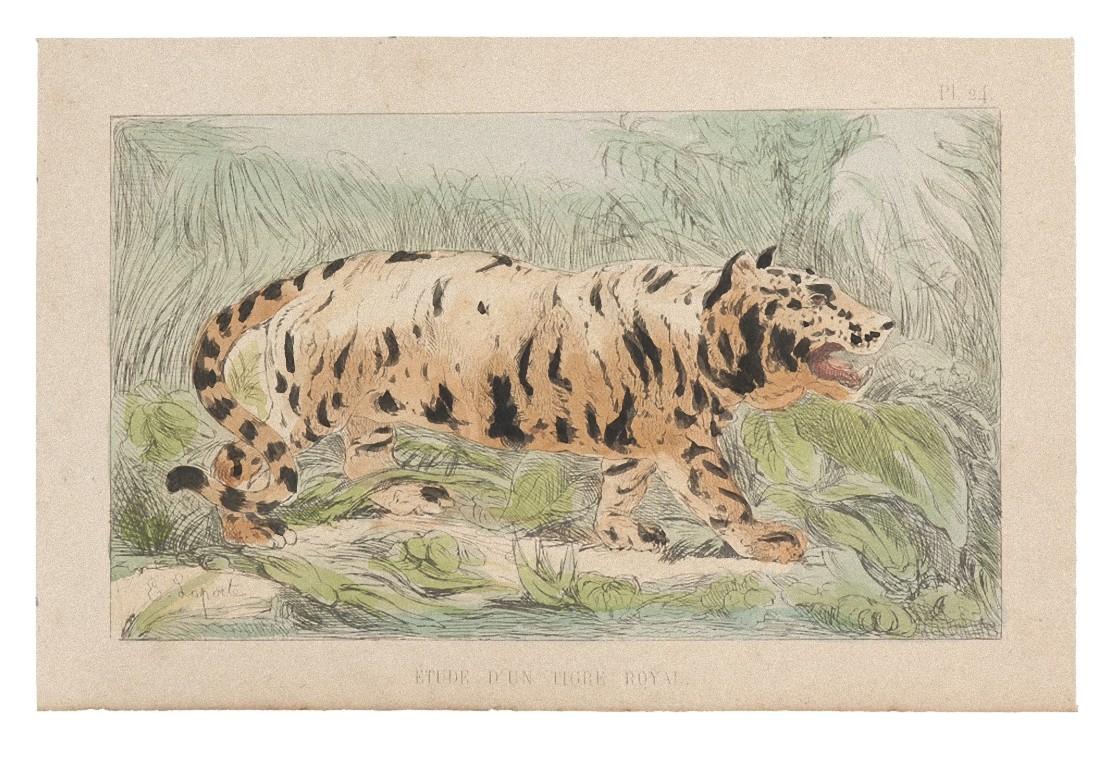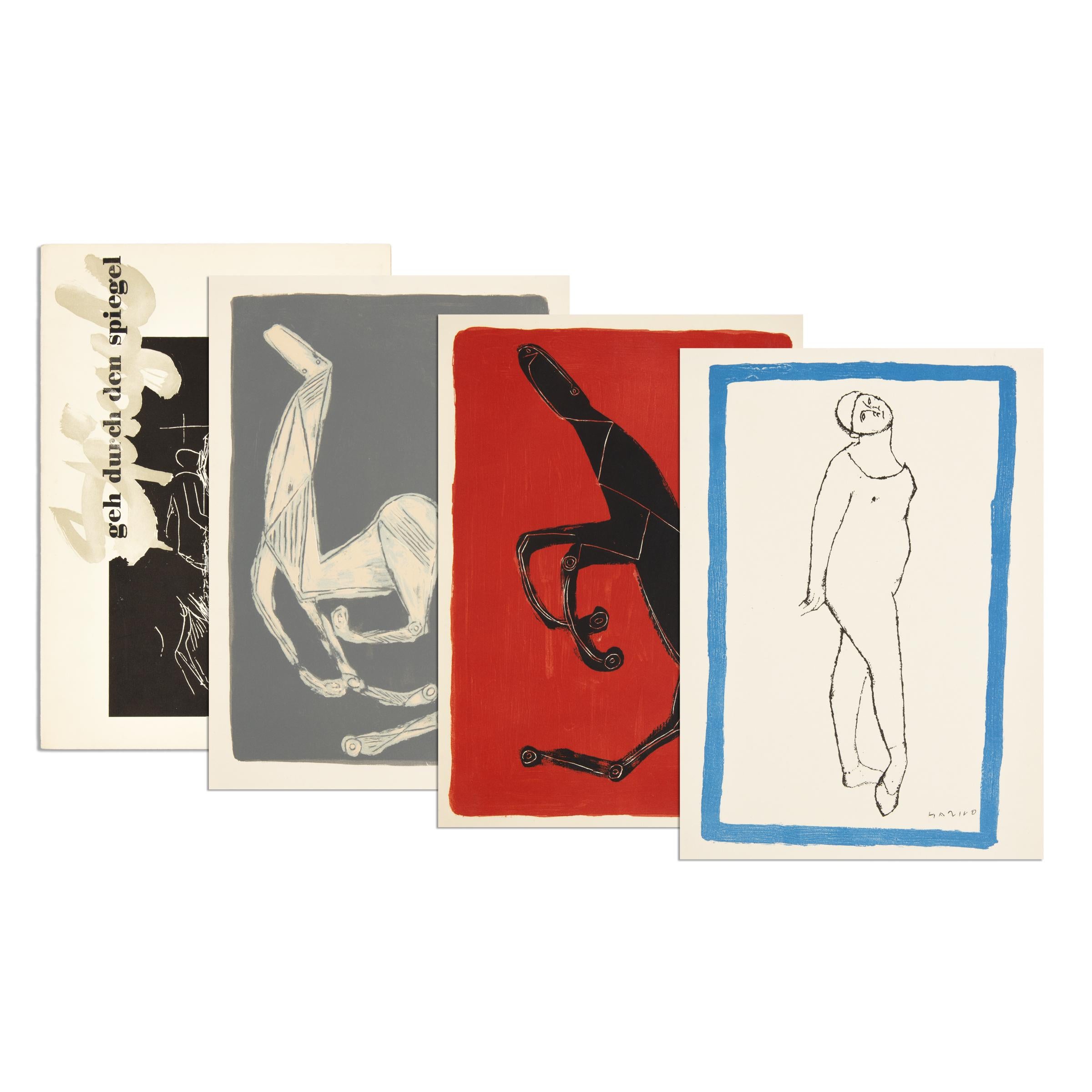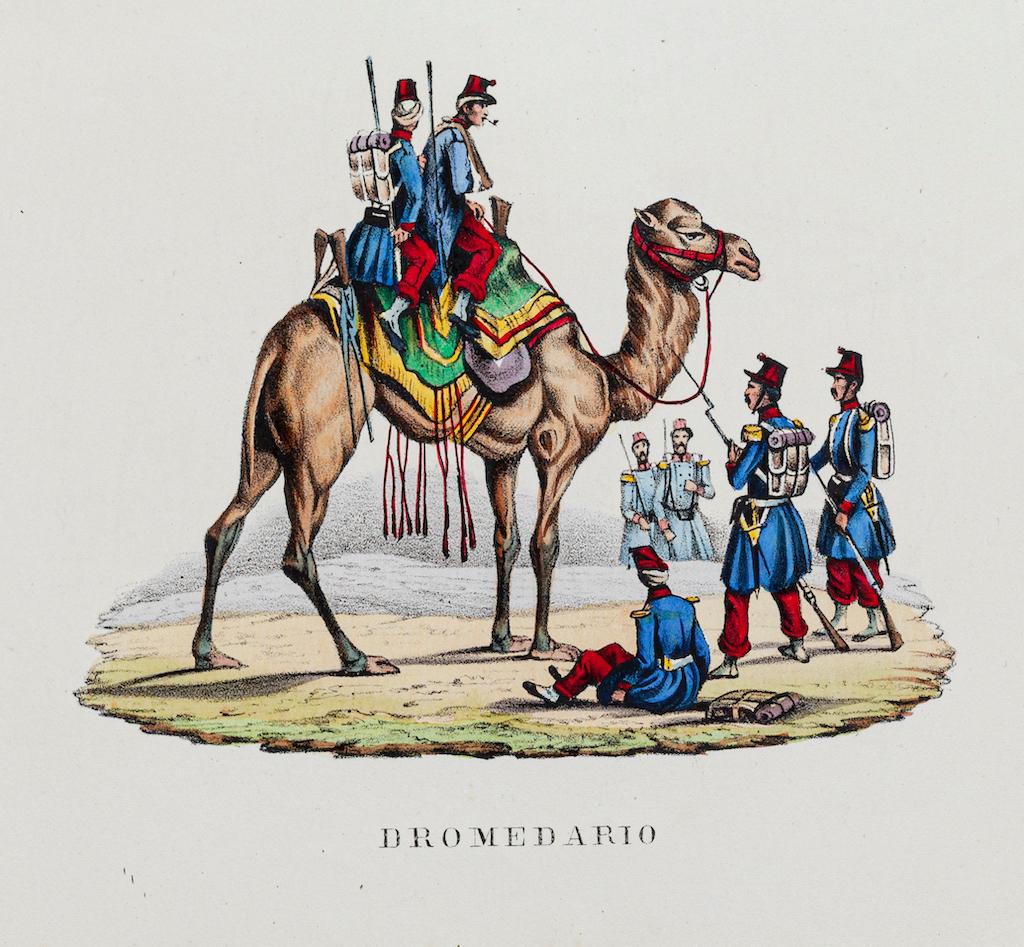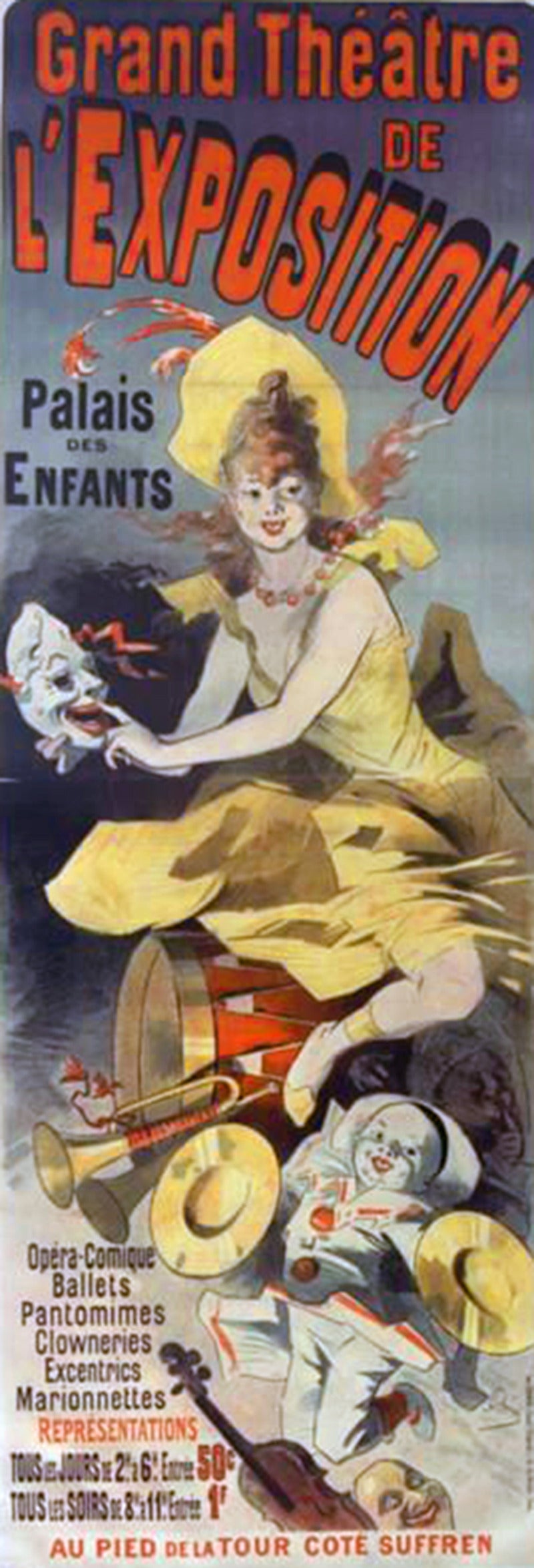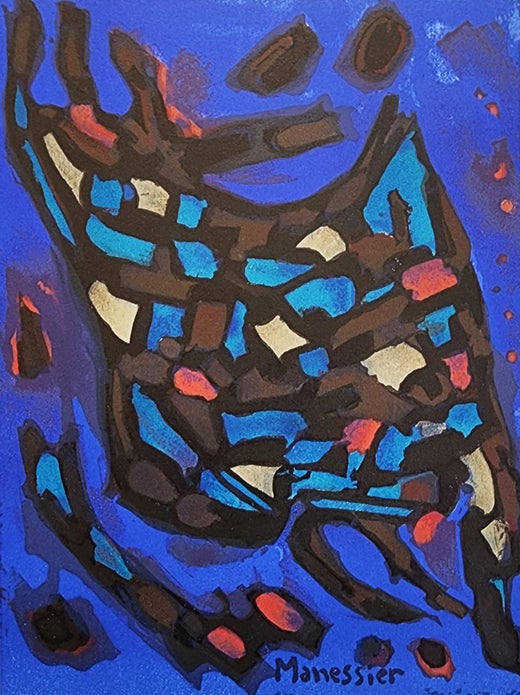Items Similar to Alfred Manessier - Lithograph
Want more images or videos?
Request additional images or videos from the seller
1 of 6
Alfred ManessierAlfred Manessier - Lithograph1962
1962
About the Item
Alfred Manessier - Lithograph
1962
From the art periodical XXe Siecle (no. 20)
Dimensions: 32 x 24
Edition: G. di San Lazzaro.
Unsigned and unnumbered as issued
- Creator:Alfred Manessier (1911 - 1993, French)
- Creation Year:1962
- Dimensions:Height: 12.6 in (32 cm)Width: 9.45 in (24 cm)Depth: 0.04 in (1 mm)
- Medium:
- Movement & Style:
- Period:
- Condition:
- Gallery Location:Collonge Bellerive, Geneve, CH
- Reference Number:1stDibs: LU16123767261
Alfred Manessier
Alfred Manessier was born on 5 December 1911 in Saint-Ouen in the Somme. Trained at the Ecole des Beaux-Arts in Amiens (1924 - 1929), he completed his training at the Ecole des Beaux-Arts in Paris and spent a brief period in the studio of the painter Roger Bissière, who introduced him to frescoes and to whom he took refuge in Boissiérettes in the Lot at the beginning of the war. From 1947 onwards, stained glass occupied a large part of his work, which was now based on abstraction. He carried out about twenty projects in France, including the stained glass windows for the church of Saint-Michel des Bréseux (Doubs), his first commission (1948 - 1950), those in the church of Saint-Pierre de Trinquetaille in Arles (1953), and the chapel of Sainte-Thérèse de l'Enfant Jésus et de la Sainte Face in Hem (Nord - 1957). The stained glass windows of the Church of the Holy Sepulchre in Abbeville, one of his last commissions carried out between 1982 and 1993, are considered his masterpiece. He also executed a dozen stained glass projects in Switzerland, Germany and Spain. As an abstract painter of the Ecole de Paris, Manessier frequently tackled subjects related to the Catholic religion. His paintings are often inspired by the landscapes of Northern France, but also by his travels. From 1956 onwards, he produced a large number of political paintings entitled "Hommage", which echoed the violence in the world. The dissemination of his artworks in the public space through these stained glass windows gave him great notoriety during his lifetime, and his paintings were awarded numerous international prizes (such as the Grand Prix of the Venice Biennale, which he received in 1962, alongside Albert Giacometti, who received the Grand Prix for sculpture). He died on 1er August 1993 as a result of a car accident, shortly after the completion of the stained glass windows in Abbeville.
About the Seller
4.9
Gold Seller
These expertly vetted sellers are highly rated and consistently exceed customer expectations.
Established in 2015
1stDibs seller since 2015
910 sales on 1stDibs
Typical response time: 2 hours
- ShippingRetrieving quote...Ships From: Collonge Bellerive, Geneve, Switzerland
- Return PolicyA return for this item may be initiated within 7 days of delivery.
More From This SellerView All
- Pablo Picasso - La Petite Corrida - Original LithographBy Pablo PicassoLocated in Collonge Bellerive, Geneve, CHPablo Picasso - Original Lithograph La Petite Corrida (The Small Bullfight) 1958 Edition of 2000, unsigned Published in the journal XXe Siecle Dimens...Category
1950s Modern Figurative Prints
MaterialsLithograph
- Georges Braque - Original LithographBy Georges BraqueLocated in Collonge Bellerive, Geneve, CHGeorges Braque - Original Lithograph 1963 Dimensions: 32 x 24 cm Andre Sauret, Monte Carlo The father of Cubism Three Cubist that distinguishes art historian periods were initiated and developed by Georges Braque: The Cubist Cézanne (1907-1909), Executive (1909-1912) and synthetic (1912-1922). Post-Impressionist and fawn, Braque no longer adheres to the contingency of a decorative way or the other. Cézanne’s paintings exhibited at the Grand Palais during the retrospective of 1907 are a revelation: Cézanne sought and invented a pictorial language. In his footsteps, Braque went to the South with the reasons of the Master. He returned with Estaque landscapes and surprising Ciotat it keeps Cezanne geometric model and retains the “passages” continuity from one surface to another to create the sensation of “turning around” of the object represented. But he wants to go after the consequences of the vision of Cezanne. In his paintings Houses in L’Estaque (1908) it simplifies the volumes of houses, neglects detail by removing doors and windows: the plastic rhythm that builds the table. Large Nude , a masterpiece of the period, can be considered the first work of Cézanne cubism . Systematizing and deepening Braque discoveries open the door analytical cubism. In 1909, his painting became more cerebral than sensual. The pattern is recreated in the two-dimensionality of the canvas, leaving aside any illusionistic perspective. In Still Life with Violin, objects are analyzed facets according to their characteristic elements, each facet referring to a particular view of the object. There are so many facets of points selected view: Table reflects the knowledge of the object and the ubiquity of the eye. Moreover, Braque is looking for the essence of the objects in the world rather than their contingency, which explains the absence of light source and use of muted colors (gray, ocher), contingent aspects of the object . But formal logic has stepped facets, erased any anecdote to the object and ultimately led to his painting a hermetic more marked on the edge of abstraction (see the series of Castle Roche-Guyon ). Braque, anxious to keep the concrete and refusing at all costs that the logic of Cubism takes the paintings to abstract, reintroduced signs of reality in his paintings in 1912 marks the beginning of Synthetic Cubism. Historians speak of “signs of real” rather than reality because what interests Braque, this is not to put reality into a table, but to create a painting which, by its language, refers to the real. To do this, he invented two major techniques XX th century inclusions and contributions. The inclusions consist of painting objects that have no real depth, materials (wallpaper in Nature morte aux playing cards faux wood is a pictorial inclusion) or letters (calligraphic inclusion in Portuguese ), made first brush and a few months later stencil. Contributions are defined in contrast with the collage on canvas of foreign materials: glued or sand paper, sawdust, etc.. Regarding the collages, Braque used for the first time in September 1912 a piece of adhesive paper imitating faux wood Compote and Glass , then the packet envelope of tobacco Bock in 1912-1913, or an advertisement in Damier , 1913). Inputs and inclusions refer to an external object in the table, without “emulate” this object. Away from their appearances, objects are represented in closest essence of the objects in the real world sense. This is also the time of Synthetic Cubism that Braque invented paper sculpture. There are, unfortunately, and no one is living proof of a photograph makes it possible to realize: Paper and paperboard. Métamorphoses period(1961-1963). In 1961, Georges Braque worked on a Greek head for the Louvre, which obsesses him, and he wishes to free his mind. He tried several times to bring out the paint and the result was unsatisfactory. He thinks the ultimate metamorphosis its Greek head projected in three dimensions. He calls in his studio of Baron Heger Loewenfeld, master lapidary, and he communicates his enthusiasm during the “fateful encounter.” Nine months later, in honor of the eighty years of Georges Braque, Heger Loewenfeld offers the Master of the ring Circe: the famous Greek head finally exorcised, carved in an onyx. Braque Loewenfeld then asked to identify other issues that haunt him. From dated and signed by Georges Braque, Heger gouaches Loewenfeld shapes works in the fields of jewelery, lapidary art...Category
1960s Modern Figurative Prints
MaterialsLithograph
- Emilio Vedova - Original LithographBy Emilio VedovaLocated in Collonge Bellerive, Geneve, CHEmilio Vedova - Original Lithograph Abstraction 1961 From the art revue XXe Siecle Dimensions: 32 x 24 Edition: G. di San Lazzaro. Unsigned and unumbered as issuedCategory
1960s Modern Figurative Prints
MaterialsLithograph
- Alfred Manessier - Original LithographBy Alfred ManessierLocated in Collonge Bellerive, Geneve, CHAlfred Manessier - Original Lithograph Colorful Abstraction 1962 From XXe Siecle Dimensions: 32 x 24 Edition: G. di San Lazzaro. Unsigned and unumbered as issuedCategory
1960s Modern Figurative Prints
MaterialsLithograph
- Georges Braque - Original LithographBy Georges BraqueLocated in Collonge Bellerive, Geneve, CHGeorges Braque - Original Lithograph 1963 Dimensions: 32 x 24 cm Andre Sauret, Monte Carlo The father of Cubism Three Cubist that distinguishes art historian periods were initiated and developed by Georges Braque: The Cubist Cézanne (1907-1909), Executive (1909-1912) and synthetic (1912-1922). Post-Impressionist and fawn, Braque no longer adheres to the contingency of a decorative way or the other. Cézanne’s paintings exhibited at the Grand Palais during the retrospective of 1907 are a revelation: Cézanne sought and invented a pictorial language. In his footsteps, Braque went to the South with the reasons of the Master. He returned with Estaque landscapes and surprising Ciotat it keeps Cezanne geometric model and retains the “passages” continuity from one surface to another to create the sensation of “turning around” of the object represented. But he wants to go after the consequences of the vision of Cezanne. In his paintings Houses in L’Estaque (1908) it simplifies the volumes of houses, neglects detail by removing doors and windows: the plastic rhythm that builds the table. Large Nude , a masterpiece of the period, can be considered the first work of Cézanne cubism . Systematizing and deepening Braque discoveries open the door analytical cubism. In 1909, his painting became more cerebral than sensual. The pattern is recreated in the two-dimensionality of the canvas, leaving aside any illusionistic perspective. In Still Life with Violin, objects are analyzed facets according to their characteristic elements, each facet referring to a particular view of the object. There are so many facets of points selected view: Table reflects the knowledge of the object and the ubiquity of the eye. Moreover, Braque is looking for the essence of the objects in the world rather than their contingency, which explains the absence of light source and use of muted colors (gray, ocher), contingent aspects of the object . But formal logic has stepped facets, erased any anecdote to the object and ultimately led to his painting a hermetic more marked on the edge of abstraction (see the series of Castle Roche-Guyon ). Braque, anxious to keep the concrete and refusing at all costs that the logic of Cubism takes the paintings to abstract, reintroduced signs of reality in his paintings in 1912 marks the beginning of Synthetic Cubism. Historians speak of “signs of real” rather than reality because what interests Braque, this is not to put reality into a table, but to create a painting which, by its language, refers to the real. To do this, he invented two major techniques XX th century inclusions and contributions. The inclusions consist of painting objects that have no real depth, materials (wallpaper in Nature morte aux playing cards faux wood is a pictorial inclusion) or letters (calligraphic inclusion in Portuguese ), made first brush and a few months later stencil. Contributions are defined in contrast with the collage on canvas of foreign materials: glued or sand paper, sawdust, etc.. Regarding the collages, Braque used for the first time in September 1912 a piece of adhesive paper imitating faux wood Compote and Glass , then the packet envelope of tobacco Bock in 1912-1913, or an advertisement in Damier , 1913). Inputs and inclusions refer to an external object in the table, without “emulate” this object. Away from their appearances, objects are represented in closest essence of the objects in the real world sense. This is also the time of Synthetic Cubism that Braque invented paper sculpture. There are, unfortunately, and no one is living proof of a photograph makes it possible to realize: Paper and paperboard. Métamorphoses period(1961-1963). In 1961, Georges Braque worked on a Greek head for the Louvre, which obsesses him, and he wishes to free his mind. He tried several times to bring out the paint and the result was unsatisfactory. He thinks the ultimate metamorphosis its Greek head projected in three dimensions. He calls in his studio of Baron Heger Loewenfeld, master lapidary, and he communicates his enthusiasm during the “fateful encounter.” Nine months later, in honor of the eighty years of Georges Braque, Heger Loewenfeld offers the Master of the ring Circe: the famous Greek head finally exorcised, carved in an onyx. Braque Loewenfeld then asked to identify other issues that haunt him. From dated and signed by Georges Braque, Heger gouaches Loewenfeld shapes works in the fields of jewelery, lapidary art...Category
1960s Modern Figurative Prints
MaterialsLithograph
- Max Ernst - The Soldier - Original LithographBy Max ErnstLocated in Collonge Bellerive, Geneve, CHMax Ernst (1891-1976) Georges Ribemont-Dessaignes, La Ballade du Soldat, Pierre Chave, Vence, 1972 Colour lithographs on Arches paper 1972 Edition : 199 Dimensions: 40 x 30 cm Refe...Category
1970s Modern Figurative Prints
MaterialsLithograph
You May Also Like
- The Tiger - Original Lithograph by Emile Henri Laporte - 1860By Emile Henri LaporteLocated in Roma, ITThe Tiger is an original modern artwork realized in 1860 by the French artist Emile Henri Laporte (1841 - 1919). Original colored Lithograph on paper. Han...Category
1970s Modern Figurative Prints
MaterialsLithograph
- Marino Marini, Geh durch den Spiegel: Catalogue including 3 Original LithographsBy Marino MariniLocated in Hamburg, DEMarino Marini (Italian, 1901-1980) Geh durch den Spiegel 1, 1954 Catalogue including 3 lithographs on paper (loose, mounted) 38 x 26 cm Markings: Each sheet signed in plateCategory
Mid-20th Century Modern Figurative Prints
MaterialsLithograph
- Dromedary - Hand Colored Lithograph - 19th centuryLocated in Roma, ITDromedary is an original lithograph, Hand-colored on paper realized by an Anonymous artist of the XIX century, Titled on the lower center. In very good condition. The artwork repre...Category
19th Century Modern Figurative Prints
MaterialsLithograph
- Grand Theatre de l’Exposition, from Les Maîtres de l'AfficheBy (after) Jules CheretLocated in New York, NYThis lithograph in colors with raised chop mark was printed by Imprimerie Chaix in Les Maîtres de l'Affiche, 1899, on fine woven, heavy stock paper. Measures 15 ¾ x 11 3/8 (40 x 29 c...Category
19th Century Modern Figurative Prints
MaterialsLithograph
- Insects - Pair of Original Lithographs by Emil Hochdanz- 1868-1869By Emil HochdanzLocated in Roma, ITInsect is an original pair of modern artwork realized in 1868-1869 by the German atist E. Hochdanz. Hand watercolored lithograph. Printed on plate of both artworks: Art Anst.v E.H...Category
1860s Modern Animal Prints
MaterialsLithograph
- Flora and Fauna - Pair of Original Lithographs by Emil Hochdanz- 1869By Emil HochdanzLocated in Roma, ITFlora and fauna is an original pair of modern artworks realized in 1869 by the German atist E. Hochdanz. Hand watercolored lithograph. Printed on plate of both artworks: Art Anst.v E.Hochdanz. Dated on lower left and number of plate print on lower right. Includes frame (fair condition): 35 x 2 x 28.5 cm Don't miss this vintage artwork!Category
1860s Modern Animal Prints
MaterialsLithograph
Recently Viewed
View AllMore Ways To Browse
Swiss Graphic Design Poster
Tire Sculpture
Vintage Paper Cutouts
William Vincent
1910 Jew
American Flag Original Painting
American Political Cartoons
Bronze Sculpture Degas
Chicano Art
Couples Erotic
Elizabeth Warhol
Fishermen Sculpture
Leonor Fini Lithograph
Louis Vuitton London
Love Russian Poster
Matisse 1943
Norway Map
Nurse Vintage Art
